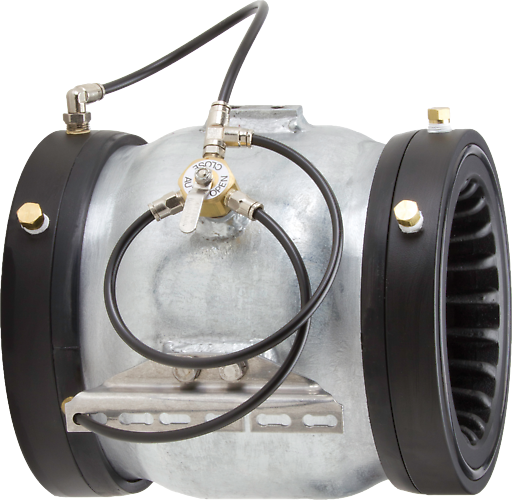
Maximize Power Financial Savings and Convenience With Advanced Building Automation Controls
In the world of modern design and center management, the combination of innovative building automation manages stands as a crucial development. By using the power of automation, buildings can adapt, react, and evolve in means that were when unbelievable.
Energy Effectiveness Conveniences
Power efficiency benefits can substantially lower energy usage and operational expenses in structures. By applying energy-efficient practices and innovations, building proprietors and drivers can attain significant savings while also adding to environmental sustainability. Among the key advantages of improving energy effectiveness in structures is the reduction of utility expenses. Energy-efficient systems, such as innovative structure automation controls, can optimize making use of resources like heating, lights, and cooling, causing lower energy expenses over time.
Furthermore, enhanced power efficiency can lengthen the life expectancy of building tools and systems. By running more successfully, heating and cooling systems, lighting fixtures, and other building components experience less deterioration, leading to reduced maintenance and substitute expenses. Additionally, energy-efficient structures often regulate greater property values and rental rates, providing lasting monetary benefits to proprietors.
Additionally, power effectiveness can boost passenger comfort and efficiency. Properly controlled interior atmospheres with optimum illumination and thermal problems produce an even more enjoyable and helpful office, leading to enhanced staff member complete satisfaction and efficiency. Overall, the energy effectiveness advantages related to advanced building automation controls are diverse, incorporating cost savings, environmental stewardship, and passenger health.
Boosted Comfort Control
Enhancing comfort control in building atmospheres calls for an advanced combination of innovative automation systems for optimal passenger well-being. By using innovative structure automation controls, centers can tailor the indoor atmosphere to fulfill the details needs and preferences of occupants. These systems enable accurate policy of temperature, illumination, and ventilation, creating a effective and comfy atmosphere. Passenger complete satisfaction and performance are closely linked to thermal convenience, making it important to have systems in place that can adapt to altering problems in real-time.
Improved convenience control exceeds fundamental temperature changes. It consists of features such as personalized setups, occupancy sensing units, and natural light utilization to develop a dynamic and responsive setting. By integrating these advanced controls, structures can not just improve convenience however likewise enhance power effectiveness by optimizing system procedures based on actual tenancy and usage patterns. Inevitably, prioritizing owner comfort via sophisticated automation systems results in an extra satisfying and healthier indoor setting.
Functional Efficiency Improvements

Furthermore, the implementation of real-time surveillance and analytics tools enables structure operators to identify power inefficiencies and operational abnormalities immediately. By constantly checking energy usage patterns and system efficiency metrics, adjustments can be made in real-time to maximize energy usage and ensure peak functional efficiency. control valves. In addition, incorporating demand feedback techniques into structure automation controls can better enhance operational efficiency by dynamically changing power use based upon grid problems and rates signals
Indoor Environment Optimization
Efficient indoor climate optimization is an essential element of structure automation controls, ensuring occupants' comfort and wellness while taking full advantage of power financial savings. By utilizing sophisticated sensing units and controls, building automation systems can constantly keep track of and change temperature, moisture degrees, air quality, and air flow to create an ideal indoor environment. Keeping comfortable and consistent conditions not just boosts passenger contentment yet likewise improves efficiency and overall well-being.
Interior environment optimization likewise plays a vital function in energy efficiency. By fine-tuning ventilation, air conditioning, and home heating systems based on real-time information and tenancy patterns, building automation controls can substantially decrease power intake - control valves. Implementing strategies such as demand-controlled air flow and thermal zoning can assist minimize energy waste while ensuring that each location of the structure gets the necessary conditioning.

Sustainable Atmosphere Development
Structure automation manages not only enhance indoor environment problems for energy efficiency and occupant convenience yet likewise lay the foundation for creating a sustainable setting with calculated administration of sources and systems. By integrating sophisticated structure automation innovations, such as sensing units, actuators, and smart software program, facilities can keep track of and adjust energy usage in real-time to reduce waste and reduce their carbon impact. These systems make it possible for anticipating maintenance, identifying prospective concerns prior to they intensify and enhancing devices performance to enhance durability and effectiveness.
Moreover, sustainable atmosphere development extends past energy management to include water conservation, waste decrease, and indoor air top quality improvement. Building automation controls can control water usage, spot leaks, and make certain correct garbage disposal techniques, adding to total sustainability initiatives. Additionally, by managing and keeping track of air flow and filtration systems, these technologies enhance owner health and wellness and performance while decreasing power intake connected with cooling and heating operations.
Final Thought
Finally, advanced structure automation regulates offer substantial advantages in regards to power savings, comfort control, functional performance, indoor climate optimization, and producing a lasting setting. By implementing these controls, buildings can accomplish ideal efficiency while reducing energy consumption and enhancing passenger convenience. It is noticeable that using advanced automation innovation is critical in enhancing building performance and producing a much more lasting future.
Power performance advantages can considerably decrease energy usage and functional prices in buildings. Overall, the energy efficiency advantages connected with innovative structure automation controls are diverse, incorporating expense financial savings, environmental stewardship, and resident wellness.
Additionally, integrating demand action methods right into structure automation controls can additionally improve functional effectiveness by dynamically changing energy use based on grid conditions and prices signals.
Structure automation controls not only enhance indoor environment problems for energy performance and passenger go to my blog comfort yet also lay the structure for producing a sustainable atmosphere through strategic monitoring of systems and sources.In final thought, progressed structure automation controls deal significant advantages in terms of energy financial savings, convenience control, operational efficiency, interior climate optimization, and producing a sustainable environment.